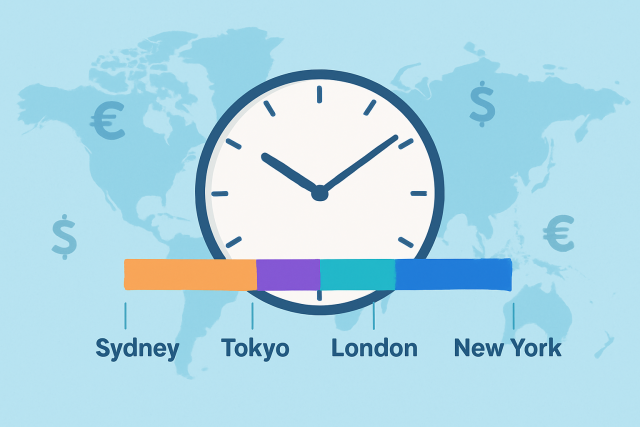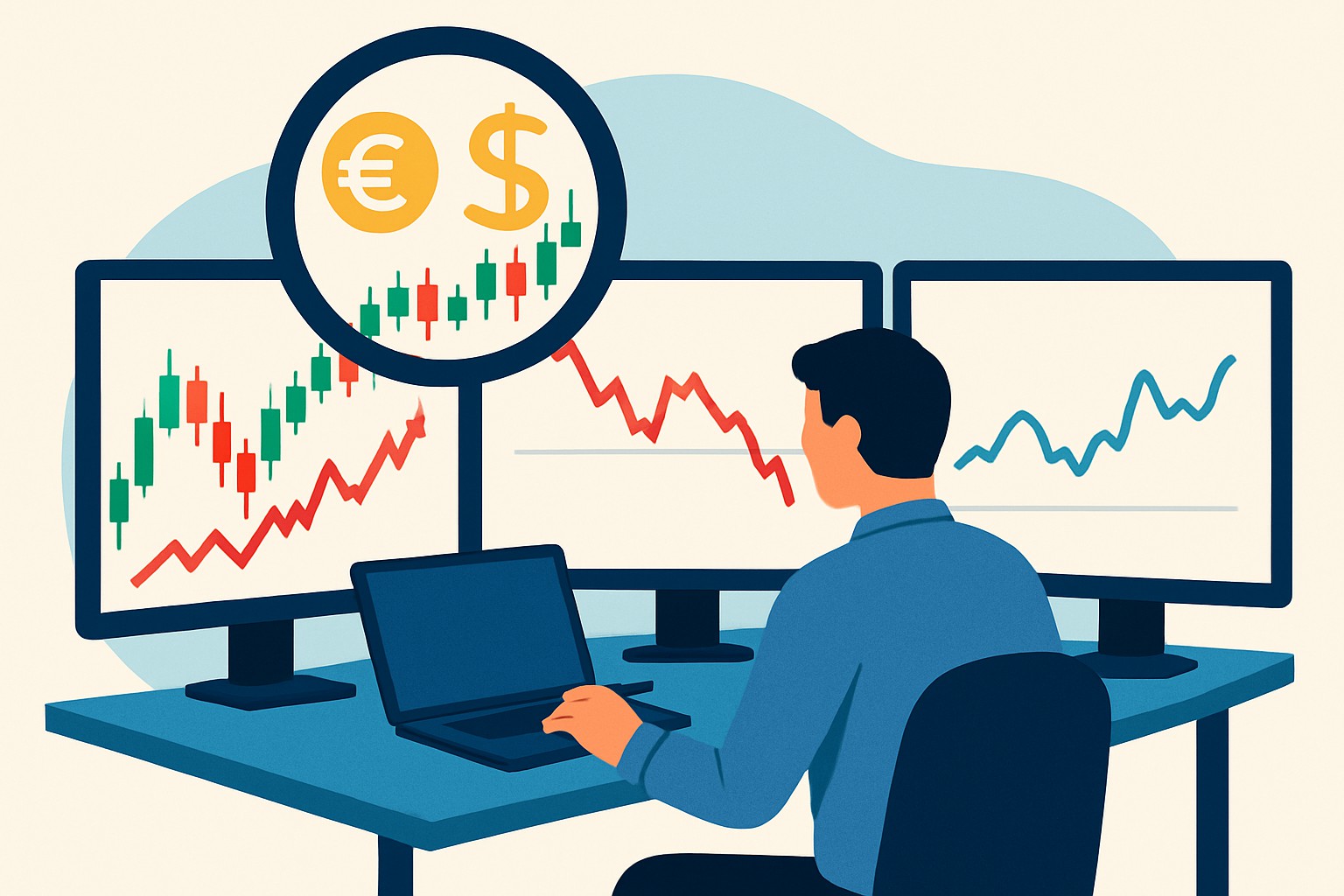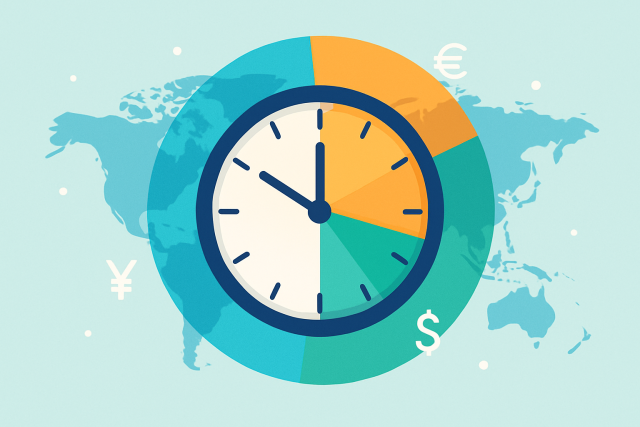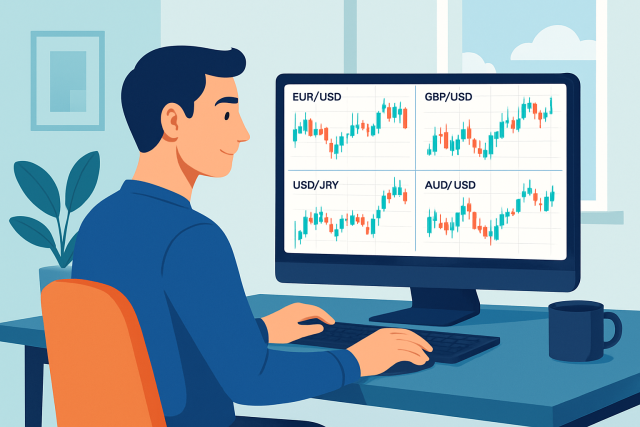
What is the Forex Market Opening Hours?
Discover how forex market opening hours shape trading strategies worldwide. Learn the key sessions,...

Understanding what is leverage in forex is fundamental, as it's a cornerstone concept that lets traders stretch their market exposure far beyond the actual cash they put on the table. Instead of trading with just their own funds, traders can borrow money from their broker to take larger positions. This can boost potential profits but also increases risk. Getting a solid handle on how leverage reshapes the forex game is absolutely key.
Leverage in forex trading is basically borrowing extra muscle from your broker to pump up your trading position beyond what your own cash would allow. Think of it as a financial magnifying glass. With leverage you control a much bigger chunk of currency while only putting up a fraction of the money. For example, if you have $1,000 in your account and decide to use 100:1 leverage, suddenly you call the shots on a position worth $100,000. It can really boost your gains but also increases the risk of losses.
Leverage ratios in forex typically range from 10:1 up to 50:1 and even 100:1. Some brokers tempt traders by offering as much as 500:1. With 50:1 leverage, your $1,000 investment lets you control $50,000 in currency. It’s wild how even the tiniest price move can lead to big gains or losses compared to your original stake. When you’re trading a standard lot, which usually means 100,000 units of currency, the margin you need is often just a small slice of that. It really depends on what your broker lays out for you.
In forex, leverage operates through margin accounts in a way that’s pretty straightforward once you get the hang of it. When you open a leveraged position, you only need to put down a slice of the total trade value and your broker chips in with the rest. This clever setup lets you control much larger positions while only tying up a small portion of your own capital upfront. Meanwhile, your broker keeps a close watch on your margin levels to make sure you can cover any potential losses.
You kick things off by putting down an initial margin which is a slice of the total trade value based on your leverage.
Then your broker chips in by lending you the rest and lets you call the shots on a much bigger position.
The trade actually goes through at the full leveraged size.
Profits and losses get calculated on that entire position so any wins or setbacks can feel like they’re dialed up to eleven.
If losses eat away at your margin past a certain threshold, your broker might give you a nudge with a margin call or even close your positions to keep things from sliding further.
It is key to get a handle on some key terms like "margin"—that's the actual dollar amount you set aside as security. Then there is "free margin," which is basically the cash you still have ready to open new trades. A "margin call" is your broker waving a red flag when your account equity dips below the required margin. Finally, the "stop-out level" is the dreaded point where your broker closes losing trades automatically to keep your account from going belly up.
Think of margin as a security deposit you hand over to your broker when you start a leveraged position. How much margin you need depends on the leverage ratio because the higher the leverage, the less margin you usually have to provide. Take 100 to 1 leverage as an example. The margin requirement then shrinks down to just 1% of your trade size. Now, this margin isn’t some sneaky fee or a cost for trading itself.
| Leverage Ratio | Margin Requirement (%) | Maximum Position Size per $1,000 Margin | Estimated Pip Value for a Standard Lot |
|---|---|---|---|
| 10:1 | 10% | $10,000 | $10 |
| 50:1 | 2% | $50,000 | $10 |
| 100:1 | 1% | $100,000 | $10 |
| 200:1 | 0.5% | $200,000 | $10 |
| 500:1 | 0.2% | $500,000 | $10 |
Just a quick heads-up: while the numbers might look straightforward, remember that higher leverage can really crank up both your potential wins and, well, the risks. It is like walking a tightrope—fun, but a little nerve-wracking if you’re not careful.
Leverage in forex trading is something of a double-edged sword. It can give your profits a nice little boost, but it’s just as capable of magnifying your losses before you know it. Because leverage ramps up your exposure, even tiny wiggles in the forex market can turn into big wins or painful setbacks.
It’s really important to draw a clear line between risk and leverage itself. Leverage on its own doesn’t magically conjure up risk but does tend to increase your exposure. When used thoughtfully, leverage can be a trader’s best friend and help squeeze the most out of opportunities without sending them into reckless territory.
Many new traders often get the wrong end of the stick when it comes to leverage, assuming it’s a magic ticket to bigger profits or believing that dialing down leverage somehow wipes out all risk. Leverage is simply a financial tool—not a golden goose. Using high leverage doesn’t guarantee you’ll hit the jackpot, and opting for low leverage doesn’t mean you’re immune to losses.
Picture this: two traders each open a $10,000 forex position. One uses 10:1 leverage while the other cranks it up to 100:1. When the market shifts 50 pips in their favor, the trader with 100:1 leverage pockets bigger gains. That comes with the flip side of potentially much heftier losses if the trade swings the other way.
| Trade Size | Leverage Used | Capital Invested | Gain/Loss (Pips) | Resulting Profit/Loss (USD) |
|---|---|---|---|---|
| $10,000 | 10:1 | $1,000 | +50 pips | +$500 |
| $10,000 | 100:1 | $100 | +50 pips | +$500 |
| $10,000 | 10:1 | $1,000 | -50 pips | -$500 |
| $10,000 | 100:1 | $100 | -50 pips | -$500 |
These examples illustrate that while the amount of capital invested changes with leverage, the profit or loss on every single pip movement still hinges on the full position size. In other words, even the smallest market tweaks can trigger surprisingly big gains or losses when leverage is turned up high.
Managing risk carefully is absolutely essential when trading with leverage. Many traders find it handy to set stop-loss orders and keep their leverage at levels that won’t keep them up at night. They size positions thoughtfully based on their account balance. Checking margin levels regularly and sticking to a well-defined trading plan also play important roles in keeping risk in check.
Leverage really shines when you treat it as a handy tool in your toolbox rather than a magic wand for instant wins. With discipline and smart risk management it can unlock a new world of trading opportunities. But let us be honest, without the right care it can just as easily lead to painful losses.
Several regulatory agencies have stepped in to set maximum leverage limits for retail forex traders to shield them from biting off more than they can chew with risk. The UK's FCA and the EU’s ESMA usually cap leverage at 30 to 1 for major currency pairs which keeps things sensible. In the US, the NFA draws the line higher at 50 to 1. Australia’s ASIC plays by similar rules.
Regulatory limits exist because leverage can quickly turn losses into something much bigger than a trader might expect or feel prepared to handle. By putting these caps in place, regulators hope to nudge everyone toward safer trading habits. This is especially important when considering what is leverage in forex—a tool that platforms like Binance offer in various options, giving users the freedom to pick levels that suit their experience while still playing by the rules.
Are you looking to navigate the dynamic world of cryptocurrency trading with confidence? Coinbase is the platform you need. As a leading exchange, it offers a user-friendly interface, robust security, and a wide range of digital currencies. Unlock the potential of the crypto market with Coinbase.
Are you ready to elevate your trading game? Binance, the leading cryptocurrency exchange, offers a seamless platform for traders of all levels. With its user-friendly interface and powerful tools, you can navigate the dynamic world of digital assets with confidence.
16 articles published
With 20 years of experience in derivatives trading, she specializes in options strategies and volatility trading, known for her innovative approaches to portfolio hedging.
Read Posts
Discover how forex market opening hours shape trading strategies worldwide. Learn the key sessions,...

Discover how TrendSpider Forex revolutionizes currency trading through AI and automation compared to...

Unlock the secrets of forex time zones and trading sessions to enhance your global trading strategy....

Discover a practical, step-by-step approach to start forex trading using essential tools like Tradin...
